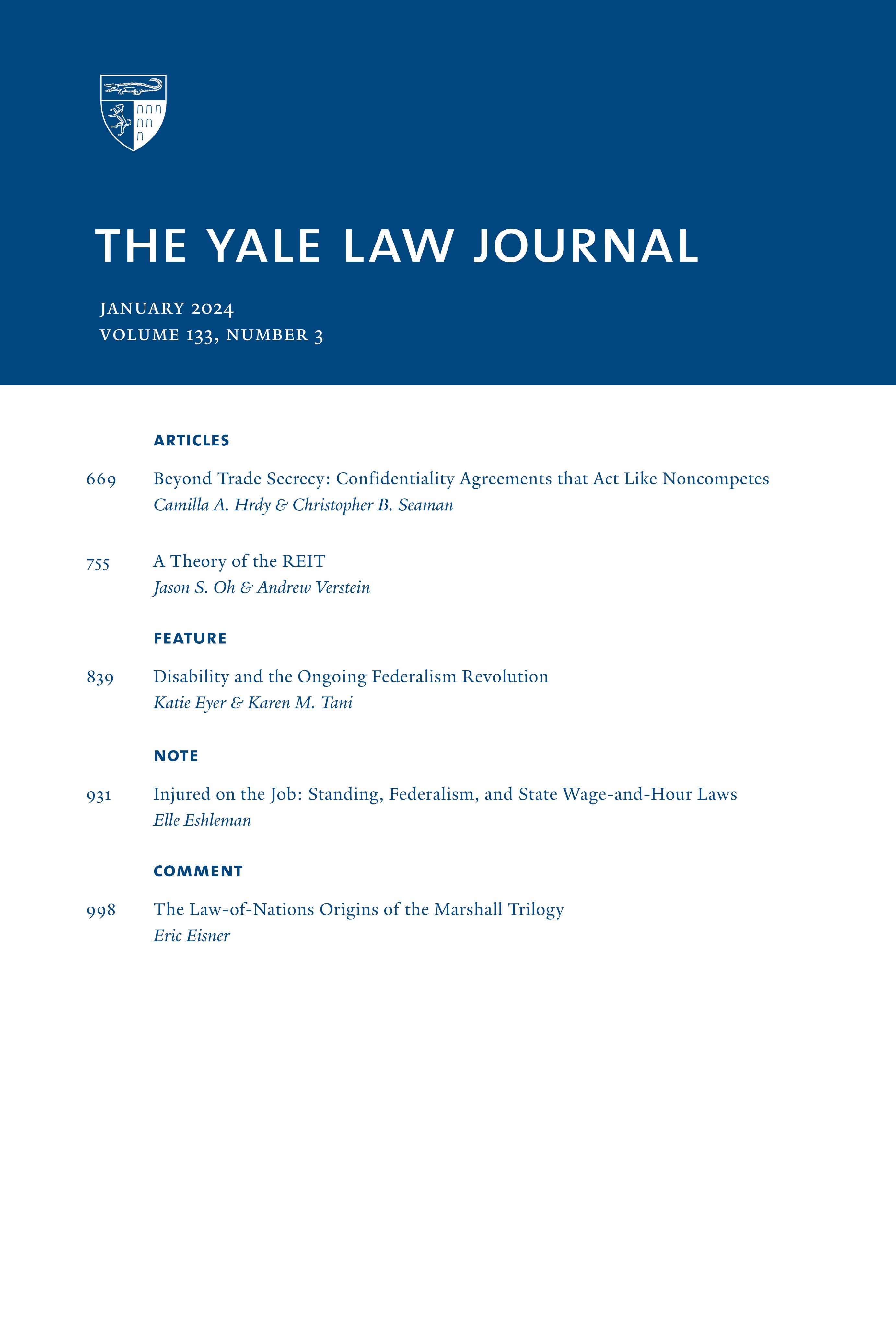2007年的联邦判决:最高法院坚持——中央法院不坚持
IF 5.2
1区 社会学
Q1 LAW
引用次数: 4
摘要
本文对2007年之后的联邦判决进行了盘点,2007年是“边缘年”。在国会山,司法部长冈萨雷斯发现,美国检察官可以反击——至少在国会希望他们这样做的时候。在最高法院,“丽塔诉美国案”、“加尔诉美国案”和“金布罗诉美国案”这三个案件将合理的地方法院奉为联邦刑事政策、量刑哲学和个性化判决融合在一起的不可言喻的地方。最高法院的量刑案件侧重于法官和陪审团之间的权力分配,而大部分量刑文献则是检察官与法官之间的较量,与此相反,这里强调的制度配对是主要法官与地区,司法部自2001年以来的量刑政策是在司法部努力对美国检察官办公室行使权力的更大背景下考虑的。通常被视为司法自由裁量权的东西,最好被视为地方规范制定中的一项协调工作,在这项工作中,一线检察官通过对信息收集投资的收费和共同控制(与各机构合作),不可避免地发挥了关键作用。检察官将在多大程度上被允许明确地接受他们已经默认行使的权力,以及虚幻的量刑统一制度是否会让位于协作规范表达和发展的真正制度,仍有待观察。但这里的建议是,新的量刑案件可能会为一个更健康的联邦刑事司法系统指明道路。本文章由计算机程序翻译,如有差异,请以英文原文为准。
Federal Sentencing in 2007: The Supreme Court Holds - The Center Doesn't
This article takes stock of federal sentencing after 2007, the year of the periphery. On Capitol Hill, Attorney General Gonzales discovered that U.S. Attorneys can bite back - at least when Congress wants them to. In the Supreme Court, the trio of Rita v. United States, Gall v. United States, and Kimbrough v. United States enshrined the reasonable district court as the ineffable place where federal criminal policy, sentencing philosophy and individualized judgment merge. In contrast to the Supreme Court's sentencing cases, which focus on the allocation of authority between judges and juries, and the bulk of the sentencing literature, which pits prosecutors against judges, the institutional pairing highlighted here is Main Justice vs. the Districts, with Justice Department sentencing policies since 2001 considered in the larger context of DOJ efforts to exercise power over U.S. Attorneys' Offices. What has often been framed as judicial discretion might better be seen as a coordinated exercise in local norm setting, an exercise in which line prosecutors, through charging power and shared control over investments in information gathering (in tandem with agencies), inevitably play a critical role. The extent to which prosecutors will be allowed to explicitly embrace the power they tacitly exercise already, and whether an illusory regime of sentencing uniformity will give way to a real one of collaborative norm articulation and development remains to be seen. But the suggestion here is that the new sentencing cases may point the way to a healthier federal criminal justice system.
求助全文
通过发布文献求助,成功后即可免费获取论文全文。
去求助
来源期刊

Yale Law Journal
LAW-
CiteScore
4.50
自引率
6.20%
发文量
0
期刊介绍:
The Yale Law Journal Online is the online companion to The Yale Law Journal. It replaces The Pocket Part, which was the first such companion to be published by a leading law review. YLJ Online will continue The Pocket Part"s mission of augmenting the scholarship printed in The Yale Law Journal by providing original Essays, legal commentaries, responses to articles printed in the Journal, podcast and iTunes University recordings of various pieces, and other works by both established and emerging academics and practitioners.
 求助内容:
求助内容: 应助结果提醒方式:
应助结果提醒方式:


